101
FAQs / How to calculate DNA bending angle?
« on: March 21, 2012, 02:10:48 pm »
DNA bending angle is a frequently used parameter in the literature, often associated with DNA-protein complexes. Nevertheless, 3DNA does not provide a direct measure of the "bending angle" in its output file of structural parameters. The topic is more subtle and complicated than it appears.
On its face, an angle is defined by two vectors; let's call them a and b, and if each is normalized, then the angle (in degrees) between them is: acos(dot(a, b)) * 180/pi. Geometrically, after moving the tails of the two vectors into the same position (e.g., origin), the heads would normally define a plane, unless a and b are strictly parallel (0°) or anti-parallel (180°).
DNA structures are three-dimensional, normally far more complicated than a single number can quantify. The concept of DNA bending angle, as I understand it, is only applicable to DNA structures with two relatively straight fragments (as in CAP-DNA complexes). Under such situations, one can fit a least-squares (LS) linear helical axis to each of the two fragments, and calculate the angle between them. Towards this end, 3DNA outputs the following section when it judges that the input structure is not strongly curved. Using 355d/bdl084, which is distributed with 3DNA, as an example:
Where the Helix: line gives the normalized vector along the "best-fit" helical axis. The two HETATM records provides the two end points of the helix, and they are directly related to the Helix: line by a simple equation. Following the above example, we have (Octave/Matlab code):
With the two HETATM records, one can easily add them into the original PDB file to display the helical axis using a molecular graphics programs (e.g., RasMol, Jmol or PyMOL). Moreover, the two helix vectors can be used to reorient the original PDB structure into a view so that one helical fragment lies along the x-axis, and the other in the xy-plane. As documented in detail in recipes #4 on "Automatic identification of double-helical regions in a DNA–RNA junction" of the 2008 3DNA Nature Protocols paper, "The chosen view allows for easy visualization and protractor measurement of the overall bending angle between the two relatively straight helices."
The following points are well worth noting:
On its face, an angle is defined by two vectors; let's call them a and b, and if each is normalized, then the angle (in degrees) between them is: acos(dot(a, b)) * 180/pi. Geometrically, after moving the tails of the two vectors into the same position (e.g., origin), the heads would normally define a plane, unless a and b are strictly parallel (0°) or anti-parallel (180°).
DNA structures are three-dimensional, normally far more complicated than a single number can quantify. The concept of DNA bending angle, as I understand it, is only applicable to DNA structures with two relatively straight fragments (as in CAP-DNA complexes). Under such situations, one can fit a least-squares (LS) linear helical axis to each of the two fragments, and calculate the angle between them. Towards this end, 3DNA outputs the following section when it judges that the input structure is not strongly curved. Using 355d/bdl084, which is distributed with 3DNA, as an example:
Code: [Select]
Global linear helical axis defined by equivalent C1' and RN9/YN1 atom pairs
Deviation from regular linear helix: 3.30(0.52)
Helix: -0.127 -0.275 -0.953
HETATM 9998 XS X X 999 17.536 25.713 25.665
HETATM 9999 XE X X 999 12.911 15.677 -9.080
Average and standard deviation of helix radius:
P: 9.42(0.82), O4': 6.37(0.85), C1': 5.85(0.86)Where the Helix: line gives the normalized vector along the "best-fit" helical axis. The two HETATM records provides the two end points of the helix, and they are directly related to the Helix: line by a simple equation. Following the above example, we have (Octave/Matlab code):
Code: [Select]
XE = [12.911 15.677 -9.080];
XS = [17.536 25.713 25.665];
dd = XE - XS
% -4.6250 -10.0360 -34.7450
Helix = dd / norm(dd)
% -0.12685 -0.27526 -0.95296 ==> [-0.127 -0.275 -0.953]With the two HETATM records, one can easily add them into the original PDB file to display the helical axis using a molecular graphics programs (e.g., RasMol, Jmol or PyMOL). Moreover, the two helix vectors can be used to reorient the original PDB structure into a view so that one helical fragment lies along the x-axis, and the other in the xy-plane. As documented in detail in recipes #4 on "Automatic identification of double-helical regions in a DNA–RNA junction" of the 2008 3DNA Nature Protocols paper, "The chosen view allows for easy visualization and protractor measurement of the overall bending angle between the two relatively straight helices."
The following points are well worth noting:
- The LS fitting procedure used in 3DNA follows SCHNAaP, which was based on the algorithm in the well-known NewHelix program, maintained by Dr. Richard Dickerson upto the 1990s. While fitting a global linear helical axis to strongly curved DNA structures makes no sense with derived parameters (NewHelix itself has been replaced by FreeHelix, also from Dickerson), I do believe it is meaningful to fit a linear helix to a relatively straight DNA fragment. That's why I have kept this functionality in SCHNAaP and 3DNA; 3DNA bending angle calculation serves as an example illustrating the point – it provides an "intuitive" way for biologists to understand how the bending angle is calculated; it can actually be measured directly.
- Instead of directly LS-fitting a linear helical axis with 3DNA, one can alternatively superimpose a regular fiber model into the DNA fragment, and then derive the straight helical axis from the fitted coordinates. The two approaches normally gives slightly different numerical values, as would be expected.
- Overall, bending angle is (at most) an approximate measure of DNA curvature. In my opinion, the concept is only applicable for comparing a set of structures, each with two relatively straight helical fragments. Even in such cases, the relative spatial relationship between two segments is more complicated than a simple (bending) angle could quantify. Be watchful – do not exaggerate the significance of small variations in bending angle.


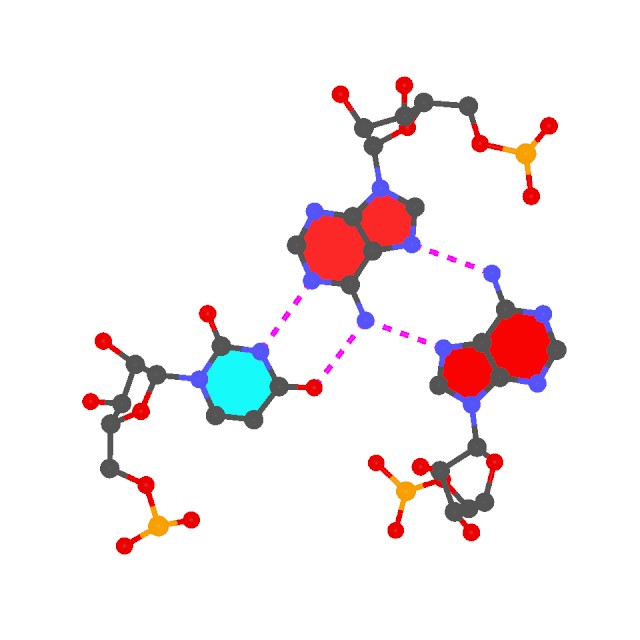
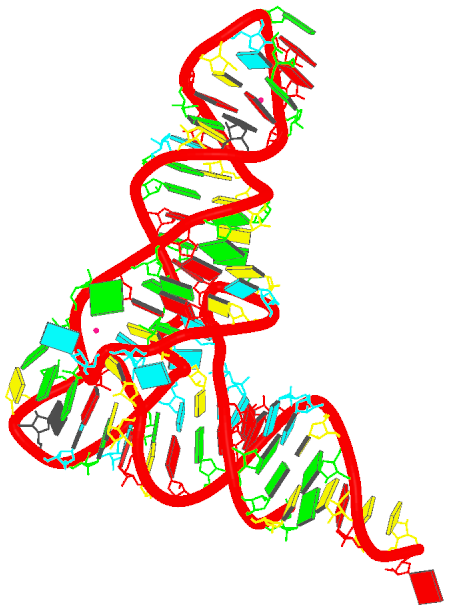
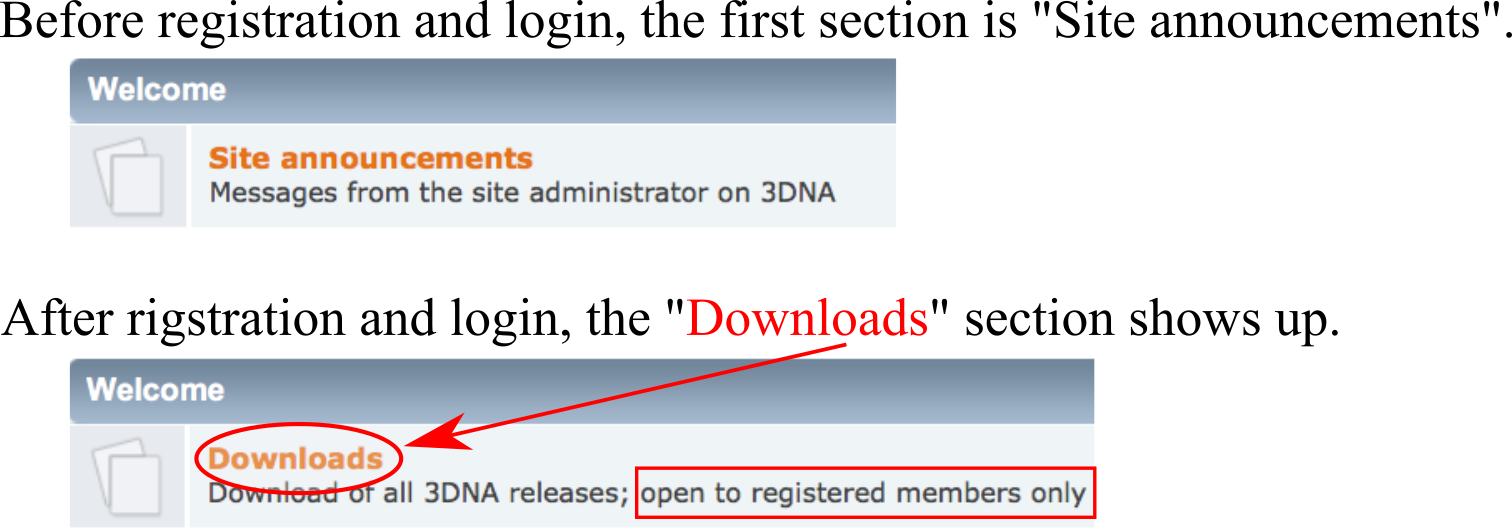
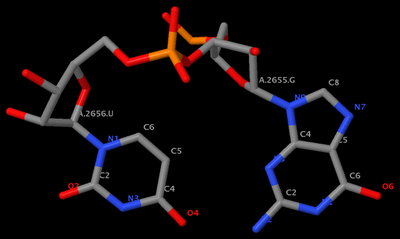
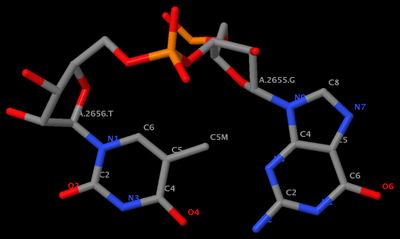
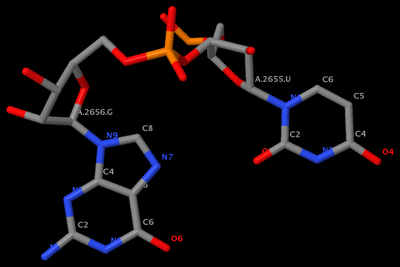

 , than in public.
, than in public.